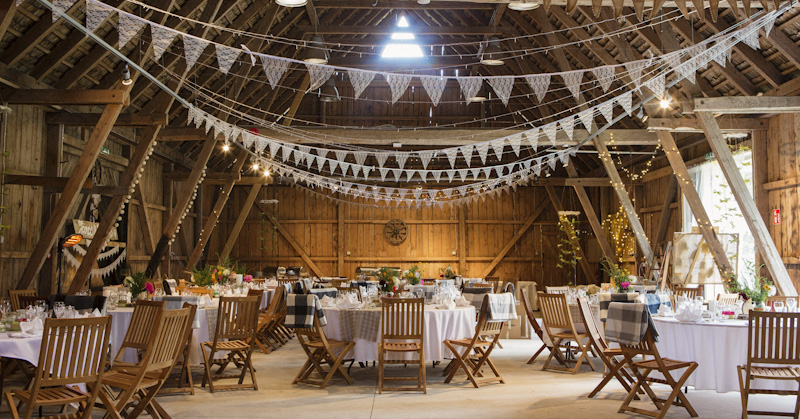Barndominium Repair Services: Quality Upkeep and Restoration
Wiki Article
Barndominiums Vs. Typical Residences: an In-depth Comparison of Way Of Life and Capability
The decision in between barndominiums and typical homes encompasses numerous elements, including way of living preferences and functional demands. Barndominiums are defined by their open layouts and flexibility, usually appealing to those who prioritize public living and flexibility.Review of Barndominiums
Barndominiums, a novel real estate fad gaining popularity throughout different regions, mix the rustic charm of barn-style architecture with the functionality of modern-day space. These unique frameworks normally include a steel or timber framework, incorporating open flooring strategies and high ceilings with energy-efficient features. Frequently situated on large country residential properties, barndominiums use homeowners the possibility to appreciate a calm lifestyle while supplying ample area for various activities.
The convenience of barndominiums prolongs beyond their aesthetic allure; they can serve as both living quarters and functional rooms for hobbies, workshops, or perhaps local business. Their adaptive layout enables very easy personalization, accommodating varied family members demands and preferences. Several proprietors appreciate the reduced maintenance requirements linked with metal house siding and roofing, adding to lasting longevity.

Attributes of Traditional Homes
Stressing classic design and comfort, typical homes are identified by their distinctive architectural styles, which usually reflect historic influences and local aesthetics. Common attributes include balanced exteriors, gabled roof coverings, and an emphasis on craftsmanship, resulting in a warm and welcoming ambience.Conventional homes typically include aspects such as crown molding, wainscoting, and hardwood floor covering, improving their classic allure. They usually feature multiple rooms with specified functions, advertising family interaction while enabling personal privacy. click here. The format usually includes official living and dining areas, which are favorable to entertaining visitors and hosting family members celebrations
Exterior products such as block, wood, or stone are regularly utilized, adding to resilience and a feeling of permanence. Barndominium builder. In addition, numerous typical homes are developed with front decks or stoops, fostering a sense of community and link with the community
Landscape design plays a substantial role in conventional home style, with properly maintained yards and paths that boost visual appeal - website. Overall, conventional homes personify a sense of nostalgia and stability, appealing to those who value heritage and a much more structured living atmosphere
Expense Contrast
Generally, a cost comparison between barndominiums and typical homes discloses substantial differences in building and construction expenditures and general financial investment. Barndominiums, commonly built from steel or steel frames, generally sustain lower material and labor prices than conventional homes you could try here constructed from wood and brick. The streamlined design of barndominiums can equate to decreased construction times, even more decreasing labor costs and expediting occupancy.Typically, the expense per square foot for a barndominium ranges from $100 to $150, while typical homes can vary commonly, normally falling in between $150 and $300 per square foot, relying on location, materials, and design complexity. This price variation makes barndominiums an attractive choice for budget-conscious customers seeking larger living spaces without compromising quality.
In addition, barndominiums may result in long-term savings through reduced maintenance costs, energy performance, and insurance coverage prices. Their durable building materials often require much less maintenance with time contrasted to standard homes. It is vital to consider that while initial expenses might be reduced for barndominiums, the final investment will also depend on private customization and desired facilities, which can influence the overall cost in both housing types.
Way Of Life and Room Factors To Consider
When thinking about way of life and room, barndominiums use an unique flexibility that allures to a range of home owners. These hybrid structures incorporate property living with practical room, typically including open layout that can be adapted to suit private demands. This flexibility is especially useful for households or individuals seeking a customized living atmosphere, permitting diverse uses such as office, workshops, or recreational locations.
Additionally, the visual charm of barndominiums can accommodate both rustic and contemporary preferences, making them a versatile choice for various design preferences (Barndominium repair). Ultimately, the option between a barndominium and a standard home often hinges on how well each option aligns with the home owner's way of life desires and spatial requirements, highlighting the value of considering personal priorities in the decision-making procedure
Ecological Influence and Sustainability
The ecological impact and sustainability of barndominiums existing engaging advantages compared to standard homes. Primarily constructed from steel and various other sturdy materials, barndominiums are typically constructed using recycled resources, minimizing the need for brand-new materials and lessening waste. Their layout generally highlights open rooms, which can bring about lower energy consumption for heating & cooling compared to traditional homes with more segmented designs.Additionally, barndominiums can include lasting features such as photovoltaic panels, rainwater harvesting systems, and progressed insulation techniques, enhancing their energy efficiency. The flexibility of their style enables house owners to incorporate these modern technologies extra flawlessly than in several typical homes, which might call for considerable retrofitting.
In addition, barndominiums often require less sources for building and construction as a result of their less complex, a lot more effective styles. This not only lowers the carbon footprint associated with building but additionally adds to an extra lasting way of life. In contrast, conventional homes might involve higher levels of power expense and source utilize throughout their lifecycle, from construction to upkeep. On the whole, barndominiums stand for a forward-thinking method to sustainable living, lining up with contemporary ecological priorities.
Conclusion
In summary, the selection in between barndominiums and conventional homes rests on specific way of living choices and useful requirements. Barndominiums, with their open layouts and lasting products, cater to those looking for adaptability and communal living. Conversely, conventional homes supply defined spaces that improve personal privacy and promote historical visual appeals. Each option offers special advantages, necessitating careful consideration of one's values and needs when identifying one of the most suitable living environment.Report this wiki page